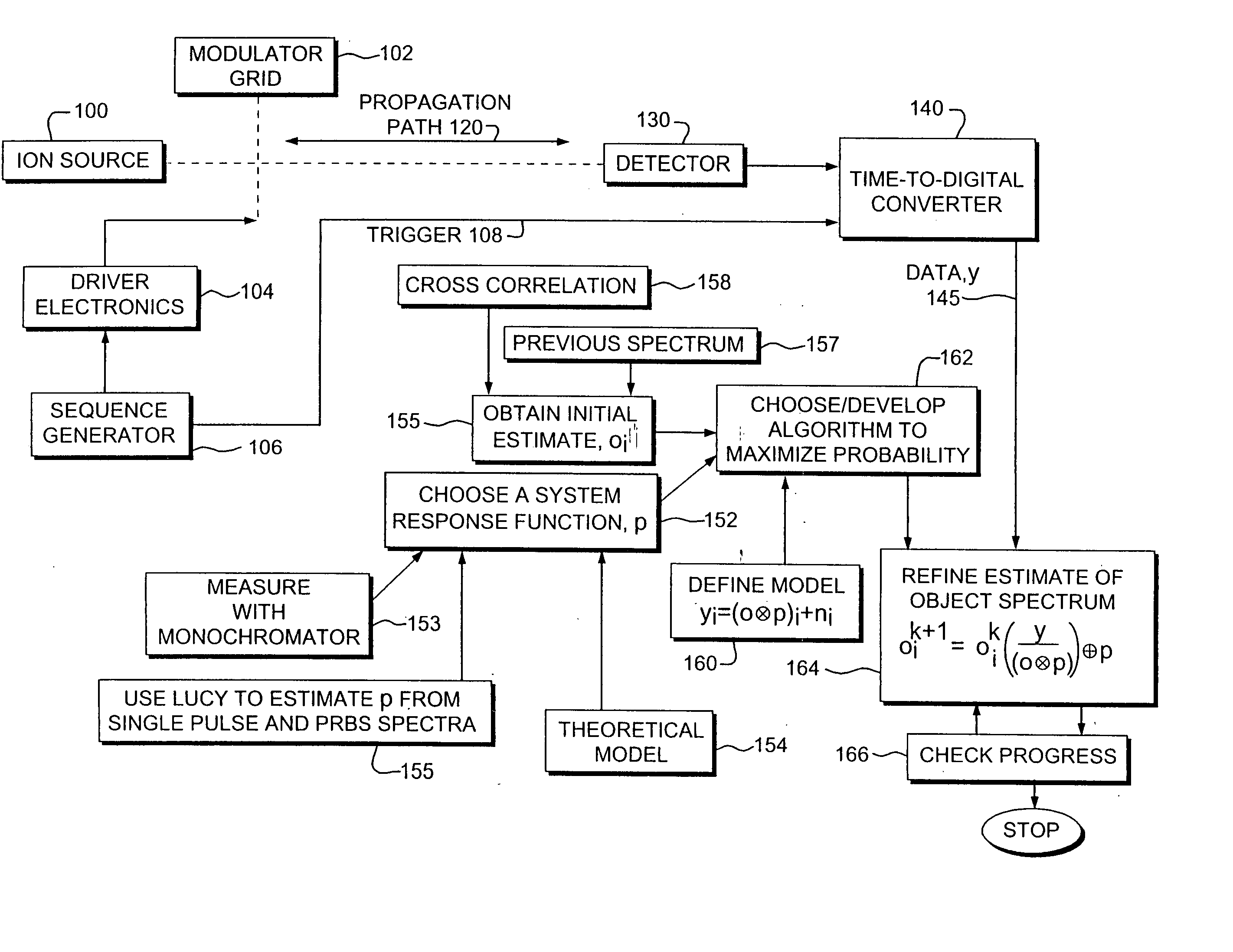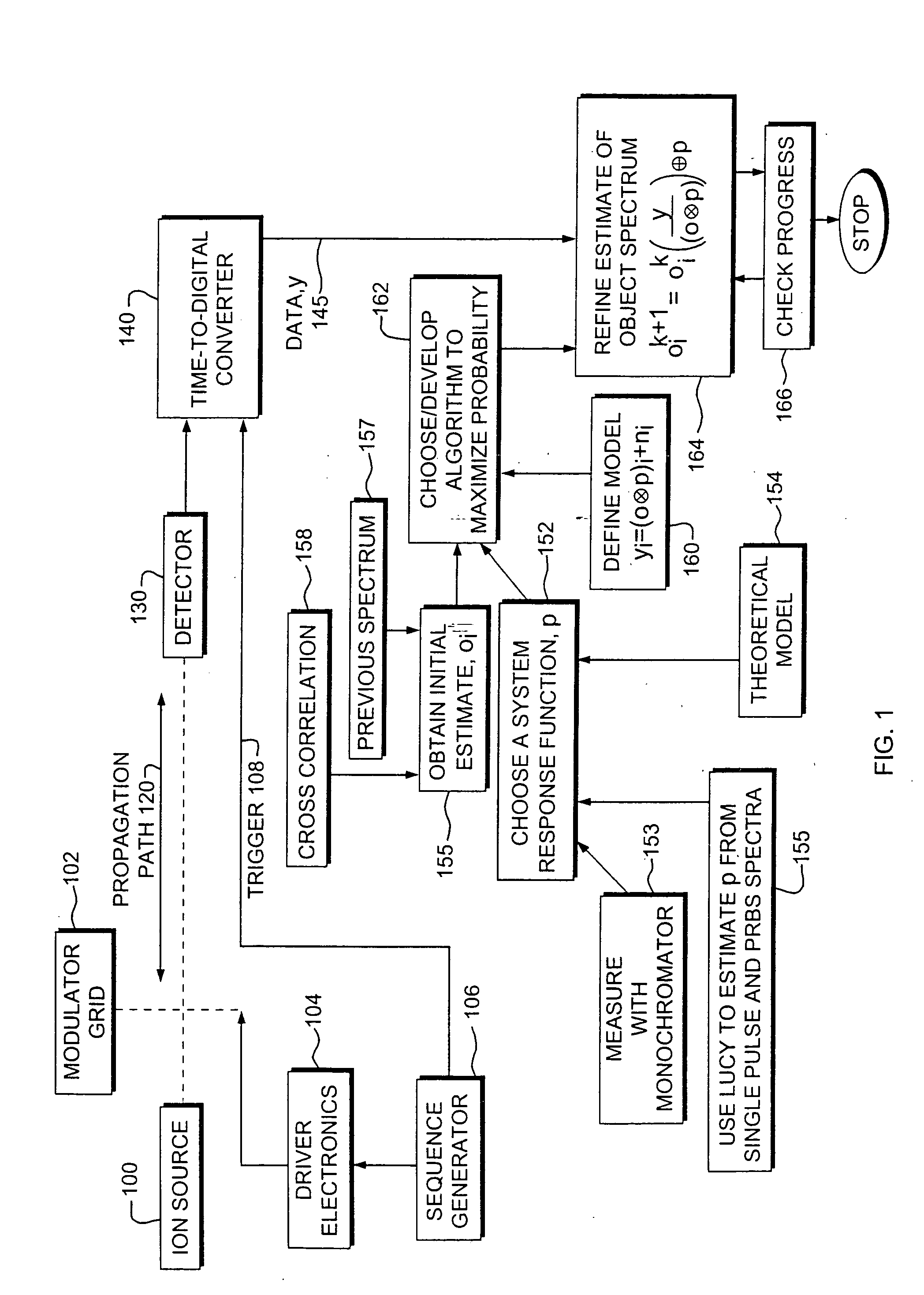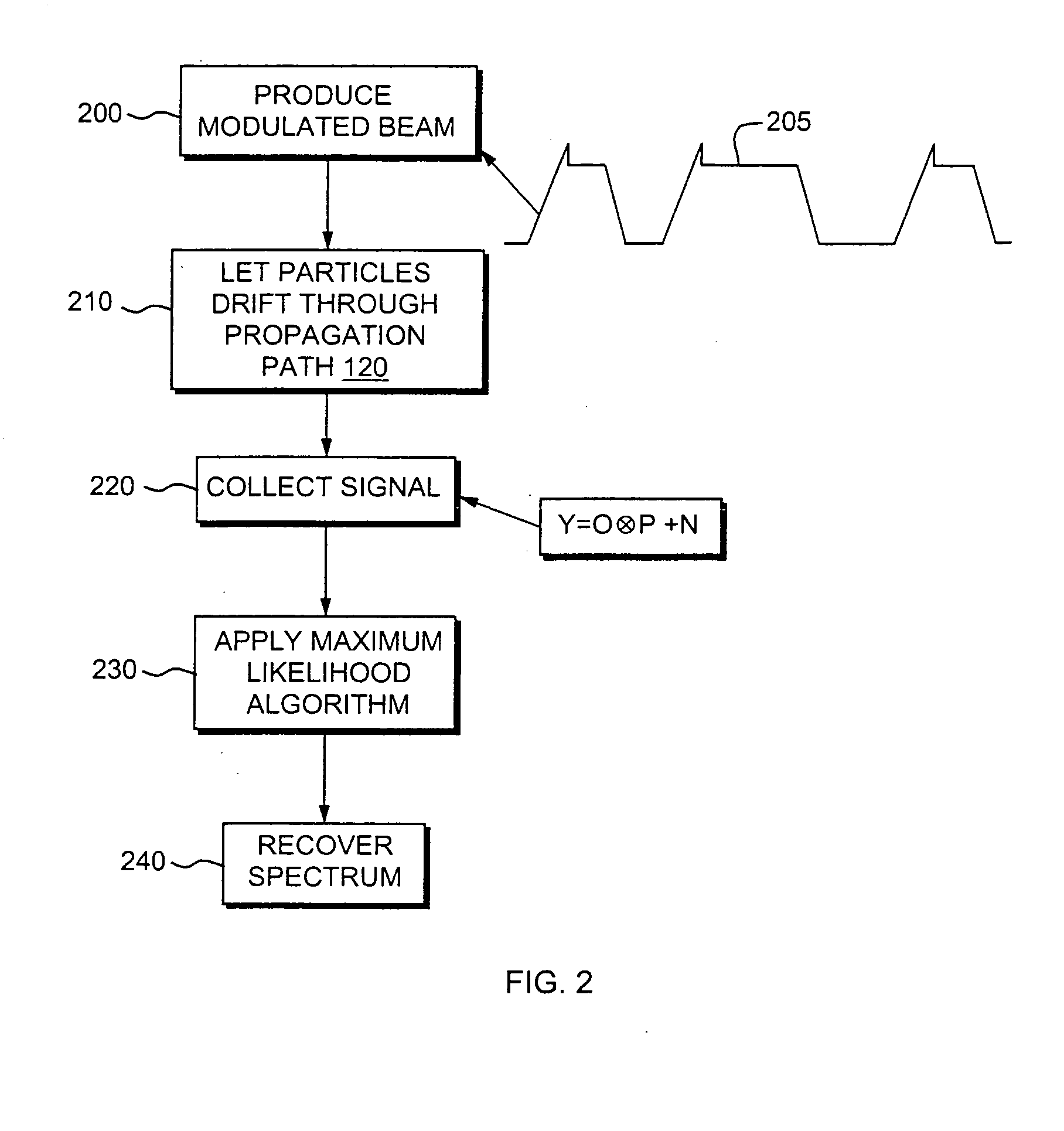Spectroscopy instrument using broadband modulation and statistical estimation techniques to account for component artifacts
- Summary
- Abstract
- Description
- Claims
- Application Information
AI Technical Summary
Benefits of technology
Problems solved by technology
Method used
Image
Examples
Embodiment Construction
1. Using Statistical Estimation Techniques to Account for Component Artifacts in a Spectroscopy Instrument
[0051]FIG. 1 is a block diagram of a spectroscopy instrument that makes use of statistical estimation techniques to account for component artifacts in accordance with the present invention. The instrument may use several different types of physical phenomena to determine the attributes of a sample. In general, a particle source such as ion source 100 provides a stream of particles to a propagation path 120. The spectrometer is a type of spectrometer that makes use of a modulator grid or “chopper”102, driver electronics 104, and sequence generator 106 to modulate the ion source 100. Alternatively, the ion source may be modulated directly either prior to or subsequent to its application to a sample in order to provide a particle beam that is modulated in time.
[0052] The modulator 102 may itself take different forms; one particularly useful implementation as a grid of wires is di...
PUM
| Property | Measurement | Unit |
|---|---|---|
| Response function | aaaaa | aaaaa |
| Distribution | aaaaa | aaaaa |
| Dynamic | aaaaa | aaaaa |
Abstract
Description
Claims
Application Information
 Login to View More
Login to View More - R&D
- Intellectual Property
- Life Sciences
- Materials
- Tech Scout
- Unparalleled Data Quality
- Higher Quality Content
- 60% Fewer Hallucinations
Browse by: Latest US Patents, China's latest patents, Technical Efficacy Thesaurus, Application Domain, Technology Topic, Popular Technical Reports.
© 2025 PatSnap. All rights reserved.Legal|Privacy policy|Modern Slavery Act Transparency Statement|Sitemap|About US| Contact US: help@patsnap.com



